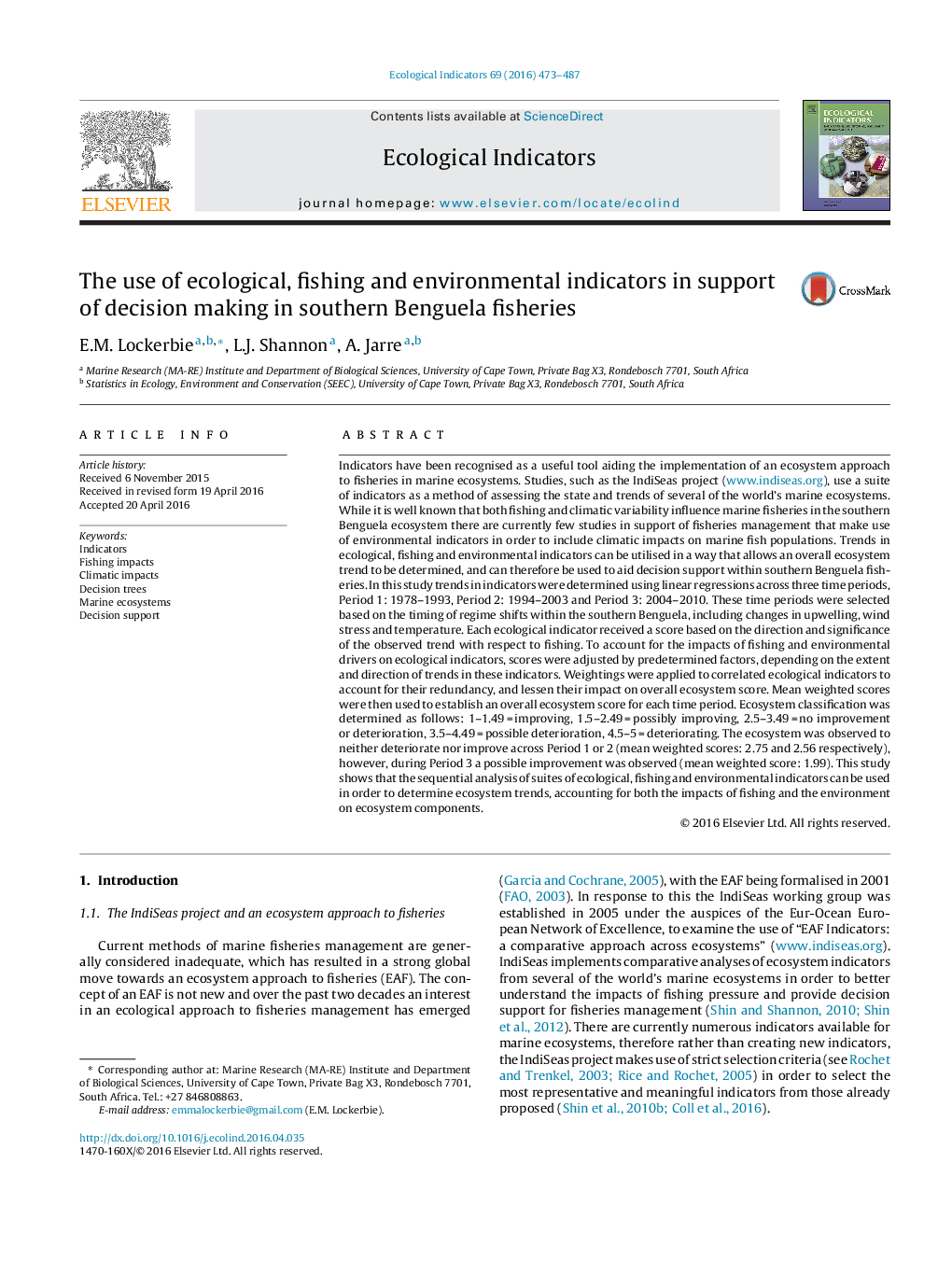| کد مقاله | کد نشریه | سال انتشار | مقاله انگلیسی | نسخه تمام متن |
|---|---|---|---|---|
| 6293274 | 1617133 | 2016 | 15 صفحه PDF | دانلود رایگان |
عنوان انگلیسی مقاله ISI
The use of ecological, fishing and environmental indicators in support of decision making in southern Benguela fisheries
ترجمه فارسی عنوان
استفاده از شاخص های زیست محیطی، ماهیگیری و محیط زیست برای حمایت از تصمیم گیری در ماهیگیری جنوب بلژیک
دانلود مقاله + سفارش ترجمه
دانلود مقاله ISI انگلیسی
رایگان برای ایرانیان
کلمات کلیدی
شاخص ها، تاثیرات ماهیگیری، اثرات آب و هوایی، درختان تصمیم گیری، اکوسیستم های دریایی، پشتیبانی تصمیم
موضوعات مرتبط
علوم زیستی و بیوفناوری
علوم کشاورزی و بیولوژیک
بوم شناسی، تکامل، رفتار و سامانه شناسی
چکیده انگلیسی
Indicators have been recognised as a useful tool aiding the implementation of an ecosystem approach to fisheries in marine ecosystems. Studies, such as the IndiSeas project (www.indiseas.org), use a suite of indicators as a method of assessing the state and trends of several of the world's marine ecosystems. While it is well known that both fishing and climatic variability influence marine fisheries in the southern Benguela ecosystem there are currently few studies in support of fisheries management that make use of environmental indicators in order to include climatic impacts on marine fish populations. Trends in ecological, fishing and environmental indicators can be utilised in a way that allows an overall ecosystem trend to be determined, and can therefore be used to aid decision support within southern Benguela fisheries. In this study trends in indicators were determined using linear regressions across three time periods, Period 1: 1978-1993, Period 2: 1994-2003 and Period 3: 2004-2010. These time periods were selected based on the timing of regime shifts within the southern Benguela, including changes in upwelling, wind stress and temperature. Each ecological indicator received a score based on the direction and significance of the observed trend with respect to fishing. To account for the impacts of fishing and environmental drivers on ecological indicators, scores were adjusted by predetermined factors, depending on the extent and direction of trends in these indicators. Weightings were applied to correlated ecological indicators to account for their redundancy, and lessen their impact on overall ecosystem score. Mean weighted scores were then used to establish an overall ecosystem score for each time period. Ecosystem classification was determined as follows: 1-1.49Â =Â improving, 1.5-2.49Â =Â possibly improving, 2.5-3.49Â =Â no improvement or deterioration, 3.5-4.49Â =Â possible deterioration, 4.5-5Â =Â deteriorating. The ecosystem was observed to neither deteriorate nor improve across Period 1 or 2 (mean weighted scores: 2.75 and 2.56 respectively), however, during Period 3 a possible improvement was observed (mean weighted score: 1.99). This study shows that the sequential analysis of suites of ecological, fishing and environmental indicators can be used in order to determine ecosystem trends, accounting for both the impacts of fishing and the environment on ecosystem components.
ناشر
Database: Elsevier - ScienceDirect (ساینس دایرکت)
Journal: Ecological Indicators - Volume 69, October 2016, Pages 473-487
Journal: Ecological Indicators - Volume 69, October 2016, Pages 473-487
نویسندگان
E.M. Lockerbie, L.J. Shannon, A. Jarre,
